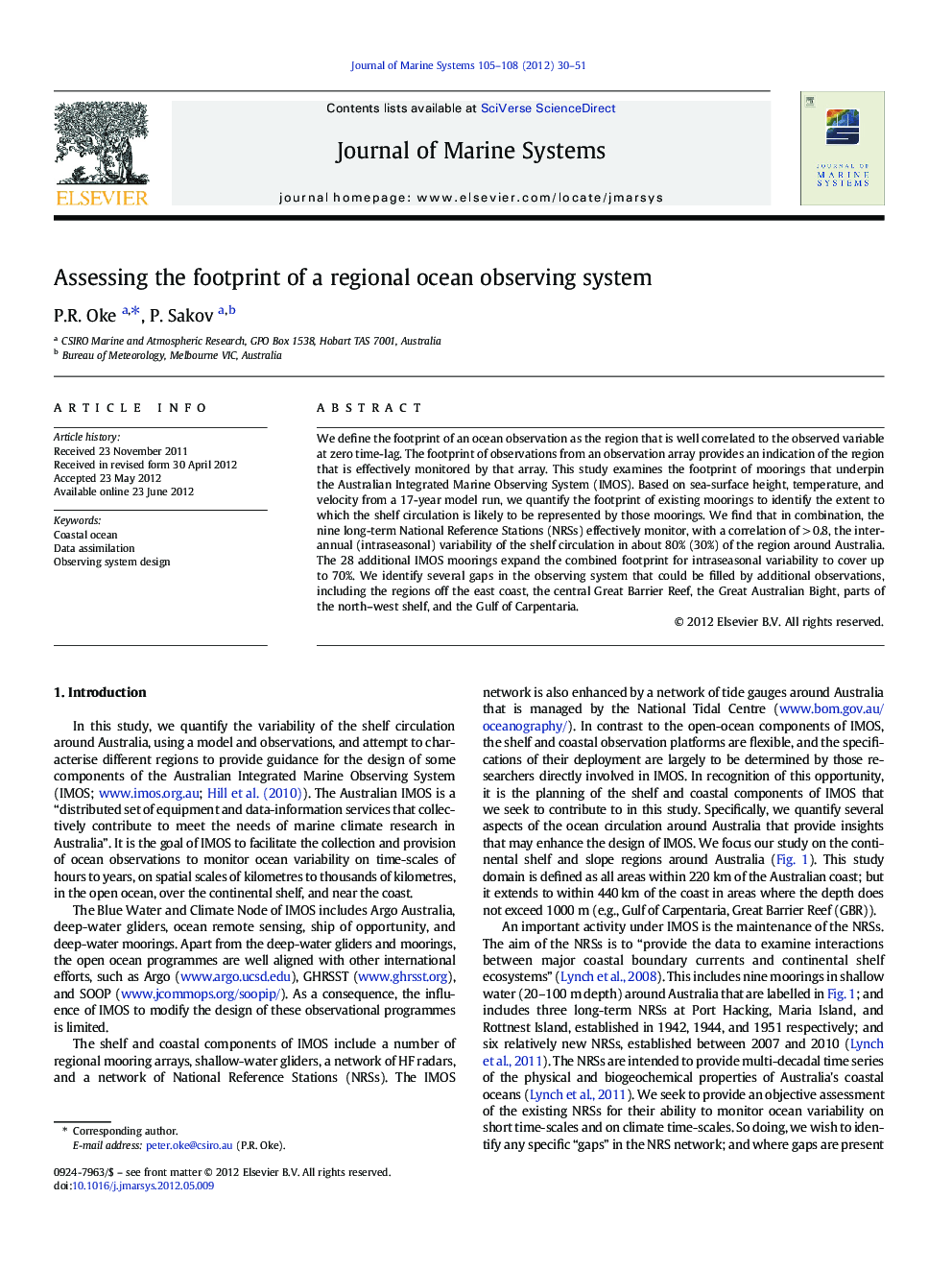| کد مقاله | کد نشریه | سال انتشار | مقاله انگلیسی | نسخه تمام متن |
|---|---|---|---|---|
| 6387220 | 1627314 | 2012 | 22 صفحه PDF | دانلود رایگان |

We define the footprint of an ocean observation as the region that is well correlated to the observed variable at zero time-lag. The footprint of observations from an observation array provides an indication of the region that is effectively monitored by that array. This study examines the footprint of moorings that underpin the Australian Integrated Marine Observing System (IMOS). Based on sea-surface height, temperature, and velocity from a 17-year model run, we quantify the footprint of existing moorings to identify the extent to which the shelf circulation is likely to be represented by those moorings. We find that in combination, the nine long-term National Reference Stations (NRSs) effectively monitor, with a correlation of > 0.8, the interannual (intraseasonal) variability of the shelf circulation in about 80% (30%) of the region around Australia. The 28 additional IMOS moorings expand the combined footprint for intraseasonal variability to cover up to 70%. We identify several gaps in the observing system that could be filled by additional observations, including the regions off the east coast, the central Great Barrier Reef, the Great Australian Bight, parts of the north–west shelf, and the Gulf of Carpentaria.
► A method for quantifying the footprint of observations is presented.
► We assess the footprint of the Australia national reference stations.
► Interannual variability is well-represented by the National Reference Stations.
► Intraseasonal variability is poorly represented by the National Reference Stations.
► Regional moorings enhance the footprint of moorings for intraseasonal variability.
Journal: Journal of Marine Systems - Volumes 105–108, December 2012, Pages 30–51